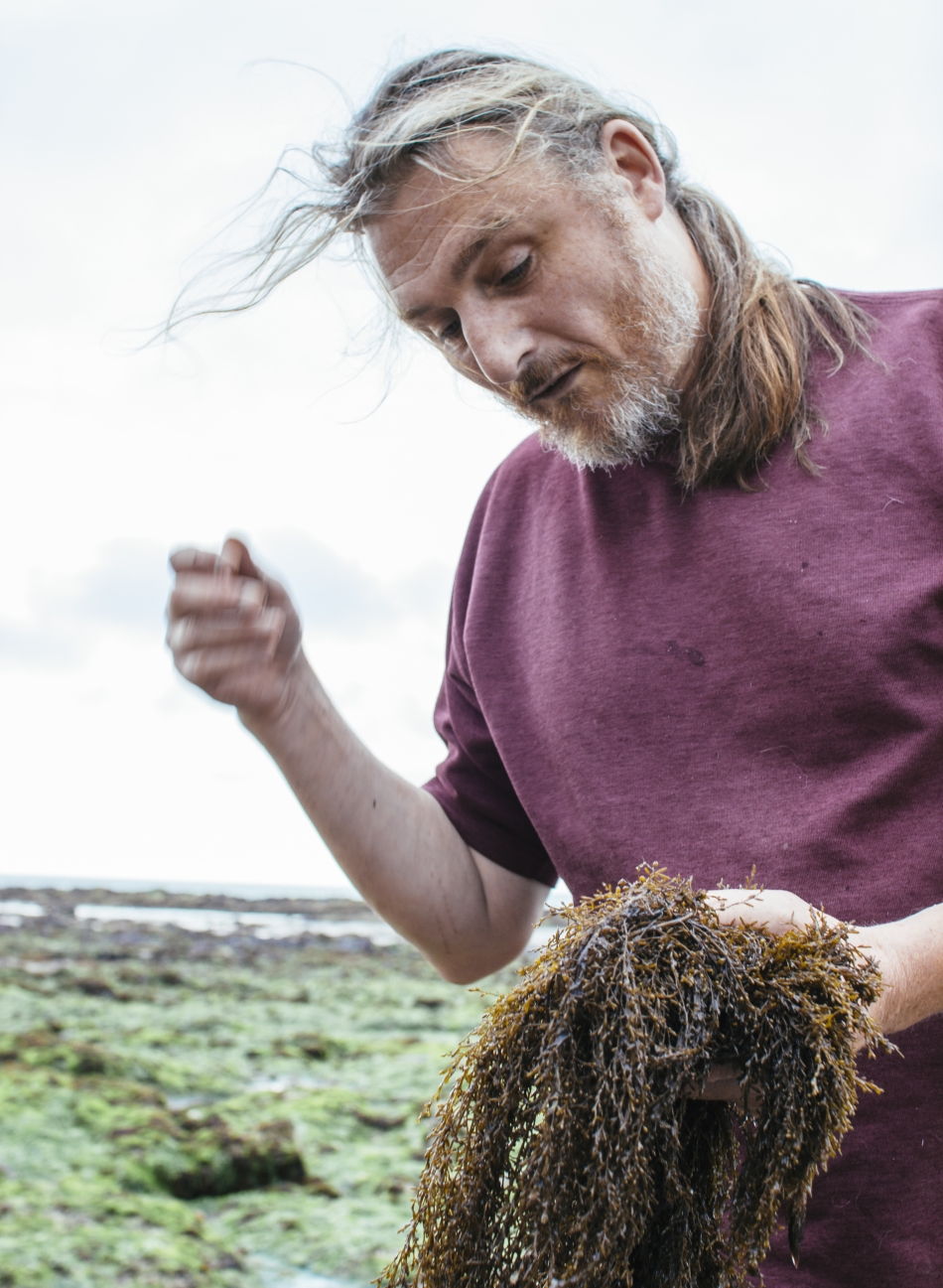Geoff, a professional forager, runs courses on the East Sussex coast between Brighton and Eastbourne. But the precise location for our jaunt is closely guarded. He’d even sworn me to secrecy before we set out.
“I have to because this is the best place for edible seaweeds in southeast England,” he’d explained during our descent to the shore. Not that it looked much like a larder to me. In fact, aside from the tall chalk cliffs hemming the ocean, it could have been any beach, anywhere in the country. The low tide had exposed rocks covered in layers of glossy weeds in a spectrum of greens and browns. None of which exactly screamed “eat me”. Then again, foraging is all about getting your eye in.
It turns out that several hundred seaweeds are native to UK waters with between 20 and 40 making great eating. Many of these grow in abundance in this spot. Splashing through rockpools and over slippery surfaces with the sure-footedness of someone who does this often, Geoff shouts the names of what lies around us: sea lettuce, sugar kelp, channelled wrack, toothed wrack, Japanese wireweed, oarweed and the ominous-sounding gutweed. Then he stops to hold up something that resembles mermaid’s hair: tendrils of red, half a metre long. Its English name is less romantic: slender wartweed.
Soon, what had been a layer of brown and green changes in front of my eyes. I start to see the individually dazzling and beautiful forms; they are all intriguing shapes and textures. As we walk, Geoff excitedly points out the more well-known edible species, as well as a couple, like ogonori, that aren’t mentioned in any UK guides, despite being highly prized in Japan, southeast Asia and the Caribbean.
“Ogonori is wildly popular in Hawaii,” he says. “To the point, in fact, that it has been foraged almost to extinction and now has to be cultivated. Yet ogonori is pretty much unknown in the UK.”
We pick some and move on. With the morning sun rising in the sky, the sea air and the calls of seabirds, I start to see the wider attractions of wild food and coastal foraging. It beats a supermarket any day and it’s surprisingly easy.

Actually, anyone could forage for seaweed but it’s obviously best to go out with a professional at first. Geoff agrees, although he stresses that his mission is to encourage people to have a go at picking and cooking it themselves. He wants us all to engage with a food type that is healthy, delicious and abundant.
Only a few decades ago, the idea of eating seaweed would have probably been met with a twisted grimace. Today that attitude is changing. Seaweed is found on menus everywhere, from the local supermarket to fine dining restaurants. That lunchtime favourite, sushi, comes wrapped in sheets of nori and there’s rehydrated wakame in miso soup.
To give it a go, select rocky shores with rockpools near the low-tide level that are not too sheltered because most seaweeds thrive in rougher waters. Geoff tells me that the right time to go is at a low, low tide – as opposed to just a low tide – and summer is the season. Seaweeds have different life cycles, but on the whole, they start growing in winter and most are at their best from late spring to early autumn. Finally, if you intend to eat seaweed raw, it’s got to grow in clean water. A good indicator is that if a beach’s waters are safe to bathe in, it’s likely that the cleanliness levels are sufficient to forage.
It goes without saying though that anybody foraging on British beaches has to take care. The environment can be edgy, with slippery rocks and fast-changing waters. “The tides can come in very quickly,” Geoff tells me. “So always check tide tables before you set out and keep an eye on the time. Be aware of how long you’ve got. It all comes down to being sensible.”
It’s sensible too to ask permission from whoever owns the beach – whether the local council, the National Trust or an individual – before you start. There is no common law right to pick seaweed unless it’s already become detached but, in practice, taking a bag or two home is unlikely to get you into trouble. It’s also good etiquette to take scissors or a knife to cut, rather than rip, the seaweed.
As we walk, I ask the classic wild food question. Geoff reassures me that there are no poisonous seaweeds near UK shores. The only dangerous type found anywhere near the UK being the desmarestia species, which releases acid when damaged. “But in the UK, these are not generally found above the lowest low tide level, so it would be unusual for a forager to ever encounter them.”